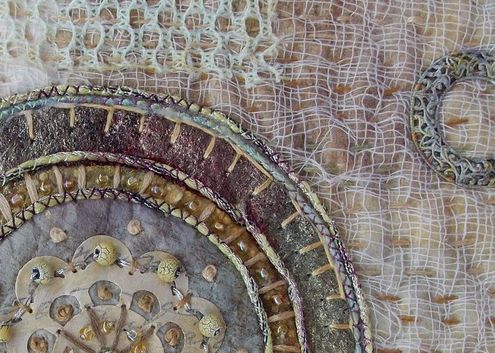JOYFUL MIND WELLBEING
|
Zen Student: “Master, when troubles come, how should we greet them?” Zen Master: “Welcome”. What? Put out the welcome mat for unwanted feelings and emotions? What a crazy idea! But seeing that it originates from Zen, a famous wisdom tradition, it might be worth a squiz. CONTEMPORARY APPROACH Contemporary wisdom practices are taking the “welcoming” stance to new heights. And successfully so: a modern adaption known as irest is being introduced to military bases and veterans’ clinics, homeless shelters, hospitals, hospices, chemical dependency centers and jails. Its success with PTSD and trauma is outstanding. EMOTIONS ARE MESSENGERS Society’s standard expectation is that we hide our emotions, as if they are something embarrassing and shameful. We internalise the social norm to the extent of even hiding our emotions from ourselves. We pretend we are not feeling a certain way; we justify and make excuses as a substitute for really feeling our emotions. Or we hold it all in! Yet, according to irest founder Richard Miller, emotions such as anxiety, anger and sadness play an important role. They are messengers carrying valuable information. Welcoming them and working with them can bring about an astonishing degree of healing and peace of mind. RUNNING AWAY The opposite of ‘welcoming’ is ‘refusing’. We’re uncomfortable with the emotion and we want it to go away. It’s a very understandable and human reaction. Beware. Pushing away what we do not want, or struggling with it, only tightens its hold. “Every feeling and emotion you deny will always return, because every feeling and emotion is a messenger trying to deliver important information to you” says Miller. “Your feelings and emotions want to be welcomed. Your feelings and emotions want to be seen, felt, heard. “ WELCOMING Welcoming emotions is a practice also supported by the well-known psychologist and author Dr Russ Harris. He recommends that we first step back and notice or observe the thought, feeling or emotion. Being an observer gives us space from being enmeshed or fused with the experience. It’s best if we observe with curiosity and openness. We can examine our experience: what does the feeling or sensation feels like? Is it hot, cold, throbbing, pulsing? Does it have a location, such as on the surface of the body or deeper in? What are its size and boundaries; is it moving or still? UNDERSTANDING In irest, the inquiry can also penetrate into images or memories connected with the emotion. Examining the physical sensations accompanying emotions can lead to a clear understanding of the emotion’s message. By welcoming feelings and emotions, and allowing ourselves to experience them as sensation in the body, we gain insight into what action is required. Then, by taking action, the feeling or emotion can deliver its messages and then depart. HOW?
Here are some resources. I'm working in the recording studio myself at the moment and can't wait to get my own recordings up. But in the meantime ... Russ Harris audio Mindfulness Skills: Volume 1 (MP3 Instant Download) | The .www.thehappinesstrap.com/mindfulness_skills:_volume_1_(mp3_instant... Purchase Richard Miller PTSD audios https://www.irest.us/products/MP3/iRestforHealing Consult an irest practitioner Lauren Tober (Byron Bay NSW) _ Fukuyo Toyota (Brisbane) or google a certified irest instructor in your area. Gestalt Therapist A Gestalt Therapy practitioner in Kyogle/Lismore/Murwillumbah area Helen McWilliam Gestalt Therapy, Counseling & Mental Health https://www.facebook.com/helenmcwilliamgestalttherapy/?ref=br_rs Like it? Share it! I love to hear from my readers. You can leave a comment via the orange comments link. Mobile users click on website version (click blog title) to enable commenting.
2 Comments
Helen McWilliam
30/4/2016 07:35:09 am
Such wisdom in the words "welcome trouble"! and so difficult to embrace. Paradoxically, that is the doorway to engaging more deeply with the riches of life, delight and joy. Thank you, Shakti.
Reply
Leave a Reply. |
Categories
All
Categories
All
|
ServicesYoga Online
Mindfulness Coaching |
|

 RSS Feed
RSS Feed